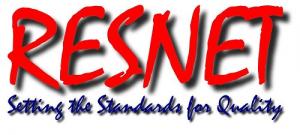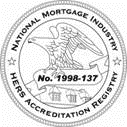The research is in, and not surprisingly it agrees with the same principles we have been adhering to in the building science community for decades now.
Let us start with what we know about Covid-19. It primarily spreads when a person encounters airborne respiratory droplets from an infected person. These droplets are produced from our breathing, coughing, and sneezing. This is directly from the CDC:
The virus that causes COVID-19 is thought to spread mainly from person to person, mainly through respiratory droplets produced when an infected person coughs, sneezes, or talks. These droplets can land in the mouths or noses of people who are nearby or possibly be inhaled into the lungs. Spread is more likely when people are in close contact with one another (within about 6 feet).
COVID-19 seems to be spreading easily and sustainably in the community (“community spread”) in many affected geographic areas. Community spread means people have been infected with the virus in an area, including some who are not sure how or where they became infected.
https://www.cdc.gov/coronavirus/2019-ncov/faq.html
We also know our chances of getting COVID-19 increase when we are in close confines with an infected individual(s) for an extended period. This is because:
1.) The concentration of airborne droplets goes up, meaning the parts per million (PPM) go up; and we know things move from a higher concentration to a lower concentration.
2.) It is harder to maintain any distance between individuals.
A well-studied outbreak (see below) stemming from a choir practice cemented this in my mind. The CDC and others promote social distancing – the thought being that 6’ apart or more will minimize the chances of droplets reaching the next person.
Following a 2.5-hour choir practice attended by 61 persons, including a symptomatic index patient, 32 confirmed and 20 probable secondary COVID-19 cases occurred (attack rate = 53.3% to 86.7%); three patients were hospitalized, and two died. Transmission was likely facilitated by close proximity (within 6 feet) during practice and augmented by the act of singing.
https://www.cdc.gov/mmwr/volumes/69/wr/mm6919e6.htm
We also know the rate of infection isn’t nearly as high when we are outside. This has been noted following many of the recent protests. The research is not as strong here, but based on somewhat anecdotal evidence, outside spaces are not as dangerous. This makes sense, especially if we do keep our distance and/or wear masks to prevent the direct transmission to another person.
About masks, I know I am going to get feedback on this but yes, masks do work, especially when infected people wear them. They slow the spread of the virus by either stopping it completely, filtering it at the mask, or slowing down the velocity at which droplets leave our mouths and noses. Yes, it depends on the mask type, fit, and if it is actually being worn (no- they don’t work when worn under your chin).
So, let us put this all together and add some general building science. If an infected person is put into an enclosed, unventilated space for a long enough period, concentrations of the virus droplets in the air will build and infect others in that space. If an infected person breathes directly on others by not maintaining distance and not wearing a mask, there is a good chance they will infect others.
This all makes sense, because we know the longer contaminants are present – be it germs from a sick person, fumes from a smoker, or VOC off-gasses from furniture in an enclosed unventilated space – the greater the accumulation of unhealthy air in the space. Therefore, we use indoor ventilation to dilute concentration levels of harmful air when we cannot prevent it from entering our homes or buildings in the first place.
Do not take my word for it though; much research has already been done on how ventilation helps reduce the spread of COVID-19.
https://onlinelibrary.wiley.com/doi/full/10.1111/ina.12697?campaign=woletoc
https://www.sciencedirect.com/science/article/pii/S0160412020317876?via%3Dihub
So, what does this mean?
How can we use this information to decrease our likelihood of contracting the coronavirus? How can we lessen or stop the spread of COVID-19 in our businesses, public buildings, schools and homes?
1.) Adequate Ventilation – Make sure your business or home has a ventilation system set to ASHRAE 62.1/62.2 standards. This can be accomplished in several ways; give us a call if you have questions. Chances are pretty good that you already have outside air entering through a roof top unit (RTU) or HVAC system. Chances are less good that the system’s been set up correctly or is turned on at all. Talk to your building maintenance personnel for assistance or give us a call if they are unable to help.
2.) Increase Filtration – Use a high-quality HVAC filter to trap remaining harmful particulates and slow the spread of germs; like a sick person would wear a mask. Again, ventilate first, but even at proper rates of ventilation we will likely only be changing the air over in our homes/buildings every 2-3 hours. A MERV 13 or higher filter is recommended to trap the most airborne particles. Proper execution is critical here. If you are going to increase the efficacy of your filters, make sure your HVAC system can handle it. Again, if your building maintenance or engineering team is not able to do this, we can help.
3.) Some recent technologies can help kill airborne pathogens also, such as UV germicidal irradiation. We like PCO, (photocatalytic oxidation), but care must be taken to make sure these technologies are installed correctly and we are not making things worse with any of these devices. Feel free to contact us for more information.
https://www.epa.gov/sites/default/files/2014-07/documents/aircleaners.pdf
By Robert Schildgen
Founder and CEO, Priority Energy, LLC












